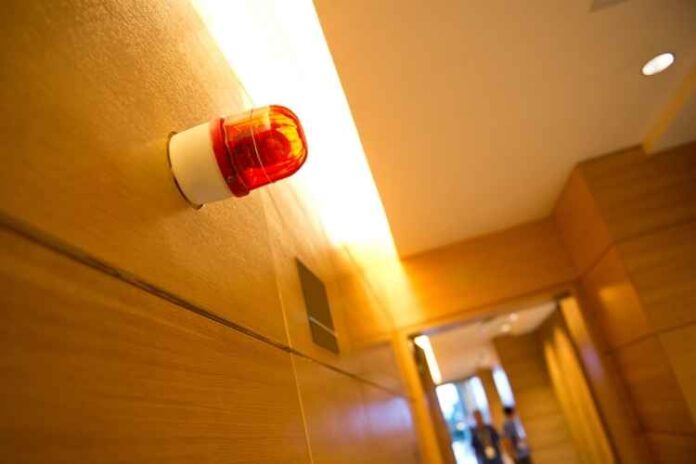Generally speaking, fire alarms are installed to alert people of a potential fire. They can be either purely manual or electric. Some of them also have sounders or call points. They are installed throughout the building but rely on the occupants of the building to recognize the presence of a fire. A manual fire alarm aims to alert fire brigades as soon as possible so that they can begin their work. These systems can also be set to exclude certain areas, such as toilets and other low-risk spaces.
Functions
Like a local fire alarm, a fire alarm is a system of fire-resistant devices that detect smoke or fire. The system’s triggering devices, such as smoke detectors, heat detectors, and duct detectors, send signals to the fire alarm control unit. These devices then activate the fire alarm’s emergency functions. The fire alarm control unit’s power sends an alternating current to a relay, which in turn energizes an electro-magnet coil and moves a switch from its normally closed position to its normally open position. This allows other systems to be activated, such as fire-reduction systems, fire-extinguishing systems, and automatic door closure systems.
Fire alarms may be equipped with a control panel, which serves as the user interface and central monitoring element. It typically includes a touchpad for onsite personnel to program and troubleshoot the system. It also contains buttons to silence and reset the system. In addition, the panel monitors all the initiating devices of the system and has supervisory functions over the wiring and alarms. The fire alarm control panel also sends calls to a monitoring agency, which alerts emergency personnel.
Indicating Appliances
Fire alarm systems are made up of many components that work together to warn occupants about the presence of fire. Each piece serves a different purpose, so it is essential to understand the entire system before purchasing one. There are two types of alarm appliances: initiating appliances, which detect the presence of fire or smoke, and indicating appliances, which sound an alarm and alert occupants to the fire company.
Indicating appliances operate by connecting to auxiliary contacts of the initiating device. They are also used to signal trouble or maintenance conditions in the fire alarm system wiring. An amber or yellow light indicates trouble, while a red light indicates an alarm signal. Meaning appliances should always be used with caution.
Fire alarm notification appliances should provide a clear and distinct sound to alert occupants of a fire. They should also call for assistance from the monitoring company. Some fire alarm systems also activate a fire suppression system, which helps to fight the fire until emergency personnel arrives. Before installing a fire alarm system, it is essential to understand the various technologies and codes. The NFPA (National Fire Protection Association) and ICC (International Code Council) are two organizations that provide certification and training. Another training organization is the National Technology Transfer (NTT), which offers complete certificates in the fire alarm field.
Indicating Conditions
An alarm system can go into a Trouble State if it is experiencing a malfunction. When this happens, the system will display a trouble zone and a buzzer to alert maintenance personnel. This buzzer is not as loud as an actual alarm but will serve the same purpose. If the system functions properly, it will alert the building’s occupants to a potential fire hazard.
An alarm system can be programmed to warn people of various conditions, such as smoke, water, or a gas leak. In addition, a trouble condition may indicate a faulty process or component if the fire alarm is connected to other systems. This type of system is often called a supervisory alarm, which means the system monitors another system or piece of equipment.
Fire alarms are programmed to activate at certain thresholds, whether pre-alarm or warning. Sometimes, a fire alarm may activate fire suppression systems to control the fire until emergency personnel arrives. Therefore, it is essential to understand how the fire alarm panel works, including setting its sensitivity level and identifying false alarms.
Power Source
The fire alarm control panel must be provided with an adequate power source. The power source must be able to power the entire fire alarm system for at least 24 hours in a nonalarm state and at least 15 minutes in an emergency. The system must also be capable of supporting emergency voice/alarm communications.
A fire alarm control panel’s power source is usually a 12-volt or a 24-volt battery. The fire alarm panel will indicate the battery voltage that the device requires, but you must be sure that the battery is of a specific voltage. Some systems use a backup battery as well. When choosing a fire alarm system, you should choose one that a recognized testing laboratory lists.
If backup power is unavailable, you may choose to install an emergency generator as a backup power source for the fire alarm system. If you use a generator, get one that complies with the NFPA 110 standards. If your emergency generator isn’t a battery backup, you’ll still need backup batteries to keep your system operating. In most cases, backup batteries should be sufficient to power the system for at least four hours.








